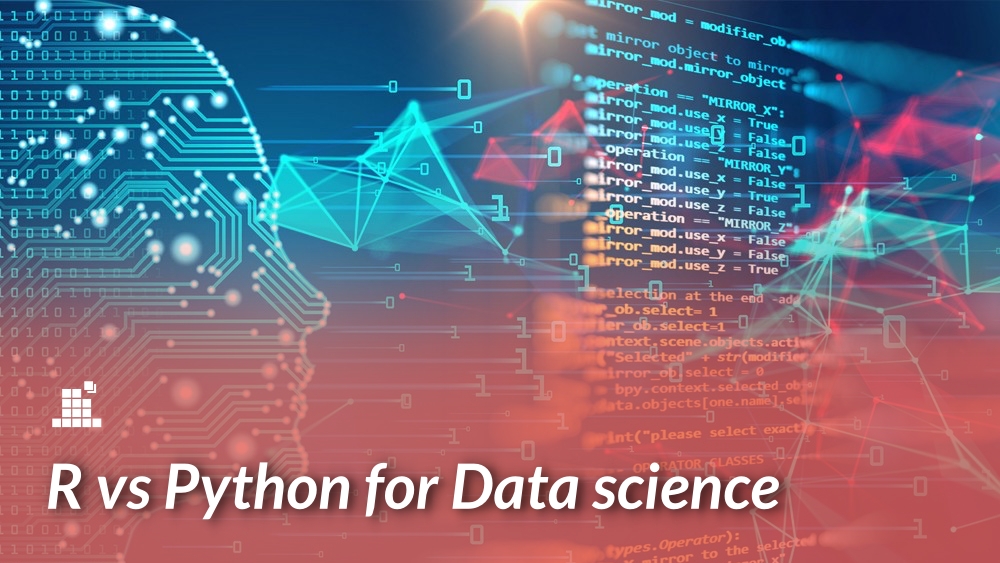If you are into data science then you must have heard about two languages – R and Python and might have confused with which language you should start your data science journey. Well, we have got you covered in the discussion where we discuss the pros and cons of both the languages.
Both of them are open source languages with huge community support. While Python is a general-purpose language as well as a great object-oriented language is favoured by many, R on another hand is mainly developed for statistical analysis.
Let’s dive into Python!
Python has a vast domain and can be used for data wrangling, data pre-processing, data cleaning, data scraping from the web and much more in other domains too.
Python has been very popular as data science community grew and the community gifted some great libraries like NumPy, Pandas, Scikit-Learn, Matplotlib, Seaborn, SciPy, TensorFlow, Keras and NLTK.
These libraries help in developing efficient and robust machine learning models with the object-oriented approach. Here we describe these popular libraries functionality:
NumPy: NumPy is one of the most efficient libraries used for scientific computations. You can operate on n-dimensional arrays which can be used in the development of tensors, solving linear algebra equations and much more.
Pandas: Pandas is famous for data manipulation, data wrangling. It offers an effective data structure which is flexible and fast. Using pandas one can merge, analyze, group, and drop irrelevant data. Pandas also come with built-in visualization tools which can allow users to use histograms, pie charts to visualize the data and extract insights of the data distribution. It also supports data aggregation, re-indexing, iteration and speed indicators.
Scikit-Learn: Packs up incredible machine learning algorithms as well as data pre-processing and model selection techniques.
TensorFlow and Keras: TensorFlow is a deep learning tool which when accompanied with Keras, a high-level API, can be used to produce effective deep learning models.
Let’s Dive Into R!
R has been helping statisticians and academics for two decades now. R comes with a rich collection of libraries which can be imported from the CRAN library and can be used for data analysis. R comes with beautiful packages like:
Dplyr: Used for data manipulation which can help you to select, filter, arrange and summarize your data frames.
Ggplot2: This library implements the grammar of graphics; it has a wide variety of functions which can be used to produce expressing visualizations.
Mlr: It packs up machine learning algorithms which can be deployed to perform classification, regression, clustering, etc. It also comes with feature selection wrapper and filter methods.
Most of the algorithms form Mlr can be parallelized.
R vs Python:
When it comes to choosing one language it might depend on your needs as well as functionalities offered by the language. Here we discuss some pros and cons of each language in comparison.
- Ease of learning: If you are a beginner then R can be a bit difficult at the beginning while python provides a linear learning curve.
- Visualizations: Visualizations are a way to explain data which is better done in R when compared to python.
- Libraries: R provides a huge collection of libraries for data analysis which can be applied to any data on the other hand python includes most of the popular libraries.
- Speed: Speed can be an important factor over one’s choice and it has been observed that python is faster than R for similar tasks performed in both these languages.
- Building models from scratch: Although there are libraries from which you can import machine learning models but if you are a beginner, Python can be better to create models from scratch due to better code readability than R.
- Deployment and Reproducibility: If you want to deploy and ensure reproducibility of your model then python has an upper hand. On the other hand, R is more suitable when you need to write a report or create a dashboard.
Conclusion
There is no perfect language, you have to choose what suits you and your task domain. Learning Python might provide you versatility. On the other hand, R provides a better ecosystem for data analysis. Thus, we can conclude that a data scientist might need knowledge in both the languages after a certain time to hone your data science skills and for me both these languages are winners!
Suggested Course : Machine Learning
Improve your career by taking our machine learning courses.
